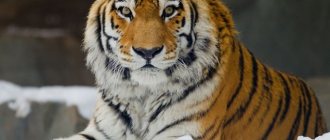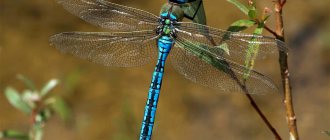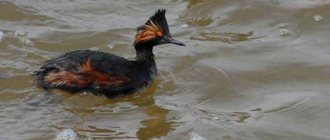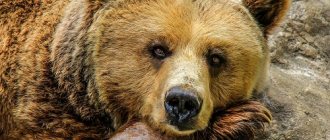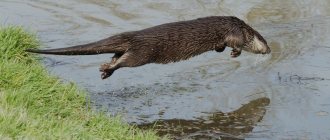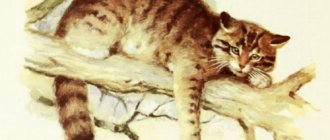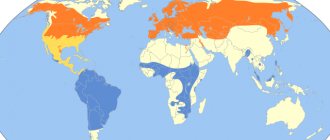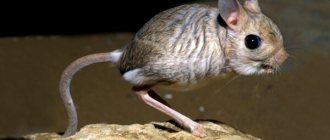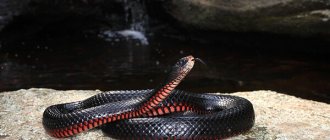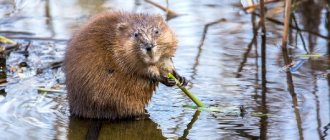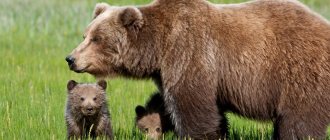Nature on a large scale feels the negative impact of human activity, which absolutely thoughtlessly litters both land and water areas with various, and sometimes toxic, waste. In addition, people carry out uncontrolled fishing of fish and other representatives of the underwater world, and also exterminate various animals. As a result of such vigorous activity, numerous species were on the verge of extinction.
In order to somehow control the process and keep records of the population of many species, the Red Book of Russia was legalized. This book contains all objects of flora and fauna, and not just animals or fish. In the Red Book you can find many species of birds that are on the verge of extinction, as well as plants, both cultivated and wild, insects, mushrooms, etc.
Chiroptera
Chiropterans belong to the order of small mammals. As their name suggests, the paws of such animals are replaced by wings. There are about 1000 species of bats in our world. The most famous representative is the bat.
Chiropterans, as a separate category of animals, have a number of specific features. It has been proven that they are color blind. They lack this skill for a simple reason - they carry out all their basic life activities in the evening or at night. As for the ability to fly, it is not as well developed as in birds. In most cases, the flight of bats resembles long jumps.
Horseshoe bat Megeli
The Megeli horseshoe bat is a species of bat that belongs to the horseshoe bat family. They occupy an intermediate link between the large and small species of horseshoe bats. They are distinguished by noticeable gray-brown “glasses” around the eyes. They are found in Southern Europe, North Africa and South-West Asia.
Southern horseshoe bat
The southern horseshoe bat is a medium-sized bat. It has a smoky gray or reddish-brown color on the upper side of the body and a whitish color on the underside of the body. Widely distributed in Transcaucasia and Southwestern Turkmenistan. Found in mountains and deserts. Flies out to hunt at dusk.
Lesser horseshoe bat
The lesser horseshoe bat is a bat whose body length is about 45 millimeters. The color of the fur on the back is gray-brown with a whitish belly. They are found in the foothills and middle zone of mountains, reaching an altitude of 2000 meters above sea level. In Russia they inhabit the Ciscaucasia region, and also cover the area of Europe from Ireland to Moldova.
Great horseshoe bat
The greater horseshoe bat is the largest representative of the horseshoe bat family with a body length of 70 millimeters and a weight of up to 35 grams. They have a brown-gray back and an ashen belly. On the territory of Russia they are found in the North Caucasus. They live mainly in the foothills and plains, where there are suitable shelters.
Eastern longwing
The eastern longwing has spread widely in the warm regions of the Southern Hemisphere, so it can be found in Africa, southern Europe, southern and southeastern Asia, Australia and New Guinea. The body length of the eastern longwing reaches 45 millimeters. The back color can be light brown or dark brown.
Pointed-eared bat
The sharp-eared bat is a small bat belonging to the genus Noctidae. The body weight of these representatives varies from 15 to 30 grams. The color of the back can be gray or light brown, and the belly can be gray-white. Sharp-eared bats are found in the Mediterranean through the Caucasus, Western and Central Asia.
Tricolor night bat
The tricolored bat inhabited the territory from France east to the western Tien Shan. A large population is located within Iran and Central Asia. Often found in northern Africa. Body sizes reach 43-55 millimeters with a body weight of up to 10 grams. The hair on the back is colored in three colors: a dark base, a white middle part and a reddish-brown end.
European broadmouth
The European broadleaf is a small bat weighing no more than 15 grams and a body length of 5 centimeters. The color of the coat varies from brown to black. There are white or gray hairs at the ends. The underside is slightly lighter than the top. It is an extremely rare species and is on the verge of extinction. Lives in the Caucasus.
Rodents
Rodents belong to the order of mammals, which includes more than 2000 species and is the most numerous. This name was given to these animals due to the special structure of their teeth. A distinctive feature here will be the upper and lower pairs of rootless incisors.
The habitats of rodents are very diverse. They are found in almost all places on our planet, except Antarctica and New Zealand. As for the climate, they are ways to live comfortably in almost any reasonable temperature conditions, including both desert heat and snowy cold.
Tarbagan (Mongolian marmot)
Tarbagan is also known as the Mongolian or Siberian marmot. It is a large rodent with a body length of up to 57 centimeters and a tail of up to 10 centimeters. The fur is sandy yellow with black or dark brown ripples. On the head is a distinctive black-brown “cap”. They are found in Northeast China, Northern and Western Mongolia, as well as in some regions of Russia.
Black-capped marmot (Baikal subspecies)
The black-capped marmot is a rare eastern Palaearctic loach species that is endangered and listed in the Red Book of the Russian Federation. The body length of these animals reaches 54 centimeters with a tail length of 13.5 centimeters. It is one of the largest marmots in the fauna of Russia.
River beaver (West Siberian subspecies)
The river beaver is a subspecies with a limited habitat that is endemic to Russia. Included in the ICA Red List. The body length of the river beaver reaches 120 centimeters, and the weight can be about 30 kilograms. The color is dark brown with a reddish tint. Life expectancy ranges from 15 to 20 years.
Giant mole rat
The river beaver is a subspecies with a limited habitat that is endemic to Russia. Listed on the IUCN Red List. The body length of the river beaver reaches 120 centimeters, and the weight can be about 30 kilograms. The color is dark brown with a reddish tint. Life expectancy ranges from 15 to 20 years.
Speckled gopher
The speckled gopher is a species of rodent from the genus Gophers and the squirrel family. They are the smallest representatives of gophers with a body length of 17 to 26 centimeters. The back is distinguished by a bright and variegated gray-brown color with whitish specks. They are found in the steppes and southern forest-steppes of the East European Plain from the Danube and Prut to the middle reaches of the Volga.
Indian porcupine
The Indian porcupine lives not only in India, but throughout South Asia. They are quite large rodents, whose weight can reach 18 kilograms. Body length varies from 79 to 90 centimeters with a tail up to 15 centimeters. The body structure is stocky. The back, sides and tail are covered with quills that alternate in color with dark brown or black.
Dormouse garden
The rodent is small in size - about 15 cm. The head and back of the animal have brown-brown fur, and white fur on the belly and cheeks. The garden dormouse lives in spruce and beech forests.
Why do animals go extinct?
The disappearance of certain representatives of flora and fauna is almost always directly or indirectly related to human activity. Even the impact on nature that does not directly lead to the death of animals (for example, the rafting of wood through water bodies) can limit a particular species in the necessary resources for life and reproduction.
Endangered animal species in Russia are a big problem. The photo shows the main reasons for this phenomenon.
The main reasons for the extinction of animals:
- uncontrolled catching of species;
- industry;
- nuclear weapons testing, war;
- cultivation of steppes and meadows for human needs, which reduces the food supply of both herbivores and predators located in the same food chain;
- deforestation, along with the destruction of other biotopes, deprives animals adapted to them of their environment, shelter and food;
- timber rafting - blocks the fish's path to spawning grounds and causes physical injury. Substances released from wood, decomposing in water already in the first day, lead to the death of fish fry and eggs, depriving them of oxygen.
Canids
A dog can rightfully be called man’s faithful friend for many centuries. However, other mammals also belong to the canine family. Basically, this includes wild animals that have not yet been domesticated by humans.
Absolutely all representatives of canines are predators. Their main characteristic feature is the presence of a high level of intelligence. Canine ways of living in a pack, observing the hierarchy established there, raising their authority and gaining recognition among other individuals. During evolution, some representatives of the canid order disappeared forever.
Steppe fox
The fox of this species is small in size: body length is up to 60 cm. In summer, the animal’s fur is short and gray in color, and in winter it becomes thicker and longer, acquiring a light gray tint. The animal lives in semi-desert and steppe.
Blue Arctic fox
Animals of this species are under threat because people kill them for their snow-white fur, from which they sew clothes. Individuals of the blue fox live on the coast of the Bering Sea.
Red (mountain) wolf
In appearance the animal is similar to a fox. Because of its beautiful fiery red fur, hunters shot wolves, so now the population of the predator has sharply declined. At the moment, rare flocks of 12-15 individuals can be found in the Far East.
Arctic fox (arctic fox)
The arctic fox is also known as the common arctic fox. Belongs to mammals of the canine family. Widely distributed in the tundra and forest-tundra of Eurasia and North America. Often found on Arctic islands. The body length of arctic foxes varies from 50 to 80 centimeters with a tail of up to 30 centimeters. It has a lush fur coat that is yellowish-gray in summer and snow-white in winter.
No direct losses
Dmitry Gorshkov, director of the WWF Russia program for biodiversity conservation:
“Fortunately, over the past 25 years in Russia, at least from what is known to the scientific community, none of the large animals have disappeared. But when we talk about the loss of biodiversity, this does not mean that we only mean the extinction of species. Can we say that we have preserved a species if, for example, it used to number a million individuals, but now there are only 20 left? Yes, we have preserved the species, but we have lost genetic diversity, but each population that lives in its own geographical conditions has its own characteristics, and when it loses genetic diversity, we lose many characteristics characteristic of this species. The same is with ecosystems: freshwater and steppe ecosystems have recently undergone significant changes; forest areas have been decreasing due to fires and illegal logging.”
Bearish
The bear order belongs to the mammal family. According to some important characteristics, they are very similar to the canid group. However, there are some important differences between these mammal species. Representatives of the bear order are distinguished by a stockier build and larger size.
Predators of the order Ursidae are the youngest group, the isolation of which occurred relatively recently. The first representatives were small. Then the size of the individual gradually increased, which made it possible to distinguish them into a separate group, separating them from the canine family.
Polar bear
It is rightfully considered the largest representative of the “bear family”. In size it surpasses even the well-known grizzly bear.
Brown bear
The brown bear is also known as the common bear and belongs to the predatory mammals of the bear family. The largest and most dangerous species of land predators with a powerful and well-developed body. It has the typical appearance of all bear representatives. It is found in the territory from England to the Japanese Islands, as well as from Alaska to central Mexico.
Wildlife area
Photo: Yugyd Va National Park
In total, over the years, with the support of WWF Russia, more than 140 reserves, national parks and other federal and regional specially protected natural areas with a total area of 54 million hectares have been created.
From 1994 to 2019, 183 million hectares (terrestrial protected areas) were taken under protection in Russia, a third of them with the participation of WWF Russia. The total area of marine protected areas in Russia is 14.85 million hectares, 77% of which were created with the support of WWF Russia.
With the active participation of WWF Russia, the national parks “Call of the Tiger”, “Udege Legend”, “Anyuysky” and “Bikin” were created, on the territory of which the Amur tiger lives; “Land of the Leopard”, where the rare spotted predator lives; The Russian Arctic and Beringia national parks are home to walruses and polar bears and have bird colonies. Thanks to cooperation with WWF, more than 30% of the area of Yakutia is now specially protected natural areas of varying status.
Today in Russia there are already 108 nature reserves, 61 national parks and 60 federal reserves.
Prepared by Stanislav Kuvaldin
Musteluns
Representatives of the mustelid family are small and medium-sized predators. Their weight can vary greatly - from 100 grams. Up to 40 kg. The length is also very different - from a few centimeters to one and a half meters. All mustelids have a special body structure. As a rule, they have it very long and elongated. Each animal also has excellent flexibility. This allows him to move quickly and hunt for food.
The vast majority of mustelids boast well-developed hair. The determining factor here is the cold habitats located in the northern regions.
European mink
The small animal is found in Russia in the region of Western Siberia and the Ural Mountains, and lives on the banks of reservoirs.
Dressing
The bandage or pereguzna is a unique exotic predator from the mustelidae family. In appearance it is similar to a ferret, but differs from it in its smaller size, blunt muzzle and large ears. The color of the dressing is very variegated and is distinguished by a bizarre alternation of white, yellow and black colors. This animal can be found in the north-west of Mongolia and China, as well as on the Balkan Peninsula and Western Asia.
Caucasian otter
The Caucasian otter is a small predator that in appearance resembles a marten or mink. It has an elongated body and leads the life of an active hunter. You can meet it in places in the Western Caucasus, in the Kuban or Kuma region, not far from the sea coasts. In the southern range it may extend beyond state borders.
Sea otter (sea otter)
The sea otter is a medium-sized animal with a body length of up to 140 centimeters and a weight of no more than 45 kilograms. The color of their body can be different: from light red to dark brown. There are also albino sea otters, which are completely white, and melanistic ones, which are completely black. Sea otters live off the coasts and coasts of California, Alaska and the far east of Russia.
Felines
Felines belong to the order of mammals; they are predators and excellent hunters. Populations of these animals are found in many countries around the world. The peculiarity of these individuals is that some of them were domesticated by humans.
The vast majority of the cat family lead a solitary lifestyle. They do not gather in flocks and prefer to exist separately from each other. Modern zoologists often divide this order into two subcategories - big and small cats. The latter type most often includes cats that lack the ability to growl.
Pallas's cat
This is a wild cat with beautiful long hair. He lives in Transbaikalia and Altai. The animal population has decreased significantly due to human hunting.
Common lynx
This is the largest representative of the lynx genus, and an adult weighs about 20 kg. The animal's fur is very beautiful, and in winter it becomes soft and thick. The animal lives in dense forests and does not really like migration.
Asiatic cheetah
There are about 10 representatives of this species in the wild, and 23 individuals in zoos. Asiatic cheetahs live in the valley of the Syrdarya River.
Caucasian forest cat
The Caucasian forest cat belongs to the cat family. It leads an extremely solitary lifestyle and is found in the forests of the Krasnodar region. It is listed in the Red Book of the Russian Federation and is under strict control. Lives mainly in deciduous and fir forests.
Caucasian jungle cat
The Caucasian reed cat is a medium-sized representative of the cat, which is distinguished by long paws and a short tail. However, it is quite larger in size than an ordinary domestic cat. You can meet it in hard-to-reach reed and bush thickets along the shores of seas, lakes and rivers. They create dens in burrows and reed creases.
Manul
The Pallas's cat is a fairly large animal, with a body length of up to 65 centimeters and a fluffy tail up to 30 centimeters long. It is a wild animal with well-formed heavy bones and strong muscles. The eyes are yellow with round pupils. Manul has spread widely throughout Russia.
Central Asian leopard
The Central Asian leopard is one of the largest representatives of its species in the world. It is listed in the Red Book because it is an endangered animal. It is distinguished by its shiny golden color with randomly located black or brown spots. On the back of the Central Asian leopard there are several rows of large spots. Found in the Caucasus and Transcaucasia.
Amur Tiger
This is the largest representative of the cat genus, which “chose” white snow and low air temperatures as its habitat. The hunting process in such conditions is quite complex. It is not easy for the tiger, however, he carries out tracking of deer and wild boars. This animal is the “pearl” of Russia. Incredibly unique! The species is quite rare and is distinguished by its expressive beauty: the belly has a five-centimeter layer of fat. Thanks to it, the animal is well protected from cold environmental conditions. Today, its population is growing in number.
Far Eastern leopard (Amur)
The species is at serious risk of complete extinction. Habitat: Primorsky Krai. Representatives of this species are also found in northeast China (in small numbers). In China, special attention is paid to the problem of protecting this species from extinction. The highest penalty for killing an individual is death. The reason for the extinction of these animals is the high percentage of poaching.
Snow Leopard
Snow leopards live in Central Asia, and in Russia these animals are considered rare species. Due to the fact that they live in hard-to-reach places and harsh climatic conditions, the population has not yet been completely destroyed.
First and second edition
The Red Book first appeared in the USSR, in 1978. The 14th General Assembly of the Union for the Protection of Animals was held on the territory of the state in the city of Ashgabat. It is to this event that the creation of the first book in the history of the state is attributed. It consisted of only two parts, the first of which described rare species of animals, the second - plants.
In 1984, the book was edited and republished. A large number of rare animals have been added to it. For the first time, large-sized specimens were presented there, and a classification of rare fish species appeared. The Red Book has expanded its volume so much that a second volume had to be created to accommodate all the subspecies by class.
Hyenas
Hyenas belong to the predatory representatives of the mammal family. Many people call hyenas dogs, perhaps because of their external resemblance. However, this opinion is erroneous. In fact, they are related to cats.
The hyena can rightfully be called one of the most controversial and externally repulsive predators. Even when pronouncing the name of this detachment, many people experience rejection. It's all because of her appearance. In fact, people in ancient times tamed hyenas quite easily. After a short period of time, the hyena willingly lived with the man, followed him everywhere, replaced the dog and even followed commands.
Striped hyena
The striped hyena is a large animal with a body height of up to 80 centimeters and a weight of up to 60 kilograms. It has a short body, which is emphasized by a mane of coarse hair up to 30 centimeters long. It is found throughout northern Africa, as well as in some regions of Asia from the Mediterranean Sea to the Bay of Bengal. Widely distributed in India and other countries further east.
Musk deer
Musk deer are most common in the taiga of Eastern Siberia. Despite the predatory long fangs of the males, these animals feed exclusively on vegetation. In addition, the musk deer has another interesting feature: the glands of the males produce a strong-smelling substance - musk. This is the most expensive animal product used in medicine and the perfume industry. For this reason, males of this species are the object of hunting.
Musk deer
Tags: endangered animals, animals, Russia
Rate this article:
(votes: 16 , rating: 4.94 out of 5)
Pinnipeds
Pinnipeds belong to the group of marine mammals. Their peculiarity lies in the fact that until now zoologists have not come to a consensus about which group these animals belong to. Some consider them predators, others prefer to separate them into a separate category.
The largest populations of pinnipeds are found in the Atlantic and Pacific Oceans. There are also many representatives in Antarctic waters. Some individuals also live in fresh water bodies, including Lake Baikal. Only a few individuals can be found in the Indian Ocean. This is explained by the water temperature in it being too high and uncomfortable for pinnipeds.
harbor seal
The common seal has spread to the northern and coastal areas of the Atlantic and Pacific oceans, as well as the Baltic and North seas. The distribution area of common seals is highly fragmented and is divided into Pacific and Atlantic. Animals are distinguished by a unique pattern on their body, and color may differ from individual to individual.
Sea lion
This individual reaches a length of 3 meters and weighs one ton. This eared seal lives in Kamchatka and Alaska.
Atlantic Walrus
The habitat of this representative is the waters of the Barents and Kara Seas. The maximum size that the presented individual can reach is 4 meters. Its weight is also considerable - one and a half tons. There were times when this species practically disappeared. However, with the help of specialists, this individual has a slight increase in popularity.
Caspian seal
The Caspian seal is a species of true seal from the order of carnivores. This representative is endemic to the Caspian Sea. In winter and early spring it migrates to the northern part of the sea, where it forms aggregations on the ice, whelps and molts, and by autumn it enters the mouths of the Volga and Ural. Endangered due to sea pollution.
Gray seal
The gray seal is a fairly large representative of real seals with a body length of up to 3 meters and a weight ranging from 150 to 300 kilograms. Gray seals have spread widely in the temperate zone of the North Atlantic, as well as throughout the Baltic Sea, including the Gulf of Finland, Riga and partly the Gulf of Bothnia.
Monk Seal
The monk seal is a representative of the genus of pinniped mammals of the true seal family. They are distinguished by widely spaced zygomatic arches of the skull and a slightly expanded nasal region. The number of these representatives is extremely small, therefore all species of these animals are included in the IUCN Red Book.
Ringed seal
The seal is small in size, and an adult grows up to 1.5 m, has light gray fur, and has well-developed sensory organs. Found in the Baltic Sea and Lake Ladoga.
Ringed worms in the Red Data Book of Russia
Motley Aphrodite
This is a sea worm with an oval body. The back of the animal is convex, and the abdomen is flat. You can meet it in the Sea of Japan. A few finds have been made here. The worm is easy to spot; it reaches a length of 13 centimeters and a width of 6 centimeters.
Zheleznyak
The large earthworm reaches a length of 24 centimeters and a thickness of 10 millimeters. The animal inhabits clayey soils, into which it dives to a depth of 34 meters. Iron ore can go this far during a dry period in search of moisture.
Chaetopterus
Reaches 15 centimeters in length and 1.5 in width. The body of the worm has 3 sections with different segments. In Russia, Chaetopterus lives on Sakhalin, in silt-sandy soils. So far, the finds are sporadic.
In the tropics, the worm is common. So the rarity of many Red Book animals in Russia is relative. Others, on the contrary, live only in domestic spaces and are even a curiosity here.
Artiodactyls
Artiodactyls can rightfully be called the most numerous order of mammals living in the modern world. It includes many subspecies, a dozen separate families, and about 80 genera. Representatives of the groups can be found on almost all continents of the planet. The exceptions are Australia and Antarctica.
Due to the huge number of species, many characteristics, such as the mass of animals, their size, etc., can vary significantly. The weight of representatives can range from 1 kg to 4 tons. The minimum height of an individual, for example, an Asian pygmy deer, can be only 23 cm.
Sakhalin musk deer
The Sakhalin musk deer is an endemic subspecies of Sakhalin Island. It is found in the middle mountain zone at an altitude of 600 to 800 meters above sea level. In appearance it resembles a deer. The body length of the Sakhalin musk deer reaches 1 meter. These representatives do not have horns, and the color can vary from yellow-brown to brown-black.
Altai mountain sheep
It is this “lucky one” that has the largest horns.
He is one of a kind. Saiga
Saiga or saiga is a steppe antelope belonging to the bovid family and the antelope subfamily. It is distinguished by the presence of an unusual trunk. It appeared 50-70 thousand years ago, but today this animal is on the verge of extinction. It is small in size, about the size of a goat, with thin legs and a dense build.
Bezoar goat
The bezoar goat is a species of mammal from the bovid family. It is the progenitor of the domestic goat. The body length of the bezoar goat ranges from 1.2 to 1.6 meters with a tail of up to 20 centimeters. The animal has a stocky build with strong limbs and wide hooves. Found in Western Asia, Afghanistan and Pakistan.
Siberian mountain goat
The Siberian mountain goat is a fairly large representative, whose body length reaches 165 centimeters and weighs up to 130 kilograms. Males of this species have massive and curved horns 1 meter long. These representatives live in remote and rugged terrain. They were the least affected by human influence, but some populations became victims of commercial hunting.
bighorn sheep
The bighorn sheep is an animal of the artiodactyl family, which is also known as the bighorn sheep and the sheep. Male bighorn sheep can gain weight of 160 kilograms, while females weigh no more than 70 kilograms. The animals live on the slopes of the snow-capped mountains of Siberia, in the territory from the Sea of Okhotsk to Kamchatka. In Russia it is also found in Yakutia, Kamchatka and Sakhalin.
Dzeren
These light-footed antelopes are found in the Altai Mountains. They live in the natural zone of deserts and steppes, have a yellowish-ocher color and long horns.
Amur goral
There are about 700 individuals of the Amur goral left in Russia, which move in groups of 7-8 individuals. In particular, they live in the Primorsky Territory.
Bison
Previously, bison lived in the forest-steppe, and the population numbered several thousand individuals. Now they are found in nature reserves; several dozen of these animals have survived.
Reindeer
This animal has fur that varies seasonally from light brown in winter to brown in summer. Both males and females have huge horns. Deer live in northern latitudes - in Karelia and Chukotka.
Przewalski's horse
This is a primitive type of horse, retaining the features of both the wild horse and the donkey. There are about 2 thousand individuals in the world. In Russia they live in nature reserves.
Kulan
The animal looks like a donkey, but has much in common with a horse. A representative of this species lives in the wild in semi-desert and steppe.
Cetaceans
Cetaceans belong to the family of mammals and the order of cetaceans. Currently, there are several theories regarding the appearance of this category of animals. One of them suggests that they evolved from artiodactyl representatives, transferring their habitat to water. Another says that these two groups have always been similar, but separated from each other.
The largest number of cetaceans can be found in all the oceans of our planet and even in some freshwater lakes. Some species live exclusively on one hemisphere, while others can be found on both sides of the world.
Atlantic white-sided dolphin
The Atlantic white-sided dolphin is found exclusively in the North Atlantic. Some individuals were recorded in the Barents and Baltic Seas. They are found in places where the water temperature does not drop below 7.5 °C. The body length of these representatives is 2.8 meters, and the upper body is colored black, while the underbelly and head are colored white.
White-faced dolphin
A distinctive feature from other representatives of its genus is its black sides and fins. Having arrived to the shores of the Baltic Sea, you can confidently wait to meet this “handsome guy”.
Black Sea bottlenose dolphin
The Black Sea bottlenose dolphin is a whole genus, which includes three species that live throughout the world's oceans. The total population size does not exceed 9 thousand individuals. The bottlenose dolphin can reach a body length of 3.5 meters and a weight of up to 300 kilograms. The animal has a large skull and a brain with many convolutions.
Gray dolphin
The gray dolphin is a species of mammal in the dolphin family. It is the only representative of the genus of gray dolphins. Adults can reach a weight of up to 500 kilograms with a body length of up to 4 meters. Distributed in open and coastal waters throughout the world, with the exception of the western coast of Africa, northeastern South America and the polar seas.
Harbour porpoise
The porpoise is a member of the porpoise family. Their body length reaches 160 centimeters, and the average weight varies from 50 to 60 kilograms. The upper part of the body is dark gray with light sides and a white belly. Animals dive deep, but do not completely emerge from the water. They can form small flocks.
Lesser killer whale
The small killer whale, despite its name, can reach 4-6 meters in body length. It is black or dark gray in color with a distinctive white stripe on the ventral side. On the territory of Russia it is found in the waters around the southern part of the Kuril ridge. Distributed in temperate and warm latitudes of the World Ocean.
killer whale
The killer whale is the largest representative of carnivorous dolphins. They feed on all living things: fish, cephalopods, marine mammals, etc. Distributed throughout almost the entire World Ocean, they are also found near the coast and in open waters. In Russia they are found near the Kuril ridge and the Commander Islands.
Narwhal (sea unicorn)
A narwhal is a toothed whale that is a member of the narwhal family. Has external similarities with a beluga whale. A distinctive feature of the narwhal is a long tusk growing from the upper jaw and twisted in a left-handed spiral. It grows throughout its life, reaching 1.5 - 3 meters in length. Animals live in the Arctic waters of Greenland, Canada and Russia all year round.
Highbrow Bottlenose
The high-browed bottlenose is small in size compared to other cetacean species. The length of an adult reaches 10 meters. They are found mainly in the waters of the North Atlantic, off the coast of North America and Europe. In the northern regions it often appears among the ice near Greenland and Iceland.
Commander's Belttooth (Stanger's Belttooth)
The Commander's harttooth is also known as the Steineger's harttooth and belongs to the cetaceans of the beaked whale family. They are a very rare and poorly studied species. Body length reaches 5-6 meters. They are found in the North Pacific Ocean, as well as near the Commander Islands, Alaska, Vancouver, Oregon and British Columbia.
Gray whale
The gray whale is a marine mammal from the group of baleen whales. The body length of an adult varies from 11 to 15 meters with a weight of up to 35 tons. According to a number of characteristics, gray whales occupy an intermediate position between right whales and minke whales. They inhabit the northern part of the Pacific Ocean, but undergo regular seasonal migrations.
bowhead whale
The bowhead whale is a baleen whale that inhabited the polar regions of the Northern Hemisphere. Its body length can reach 20 meters, and its weight ranges from 75 to 100 tons. The body is dark in color with a massive head on which is a large curved mouth. Animals of this species live in cold waters with difficult climatic conditions.
Japanese right whale
The Japanese right whale is a member of the right whale family. In terms of external characteristics, it is almost indistinguishable from the North Atlantic right whale, but is slightly larger with a body length of up to 18.5 meters. Its habitat covers the northern part of the Pacific Ocean from the Sea of Okhotsk to the Bering Sea and the Gulf of Alaska.
Gorbach
A bright individual. It has an interesting swimming style: it arches its back. It got its name for this feature.
Northern blue whale
The northern blue whale is the nominate subspecies that served as the basis for the first description of the species by Carl Linnaeus. The body length of these representatives can reach 27 meters, and their weight ranges from 130 to 150 tons. They are found in the North Atlantic and North Pacific Oceans.
Northern fin whale (Herring whale)
The northern fin whale is also known as the herring whale and belongs to the order of cetaceans. The body length of an adult varies from 18 to 19 meters, and the weight can reach 50 tons. They have a slender body and a small head. They live in all oceans and seas from the Arctic to the Antarctic, widespread from the Barents Sea to the Azores.
Sei whale (Wilder whale)
Sei whale is a large striped animal with a body length of up to 20 meters and a weight of about 30 tons. The color on the back is predominantly dark, on the sides there are small light spots on a gray background, the belly can be gray or white. The sei whale is found in all oceans, preferring waters with temperatures from 8 to 25 °C.
Beaked whale
The marine cetacean is found in the waters of Kamchatka and the Far East. Adults grow up to 8 meters in length and weigh 2-3 tons.
Sperm whale
The sperm whale is the largest representative of toothed whales and the only one from the sperm whale family. Male sperm whales reach 20 meters in length and weigh about 50 tons, while females do not grow more than 15 meters and weigh 20 tons. You can meet sperm whales in the waters of the entire World Ocean, with the exception of the cold northern and southern regions.
